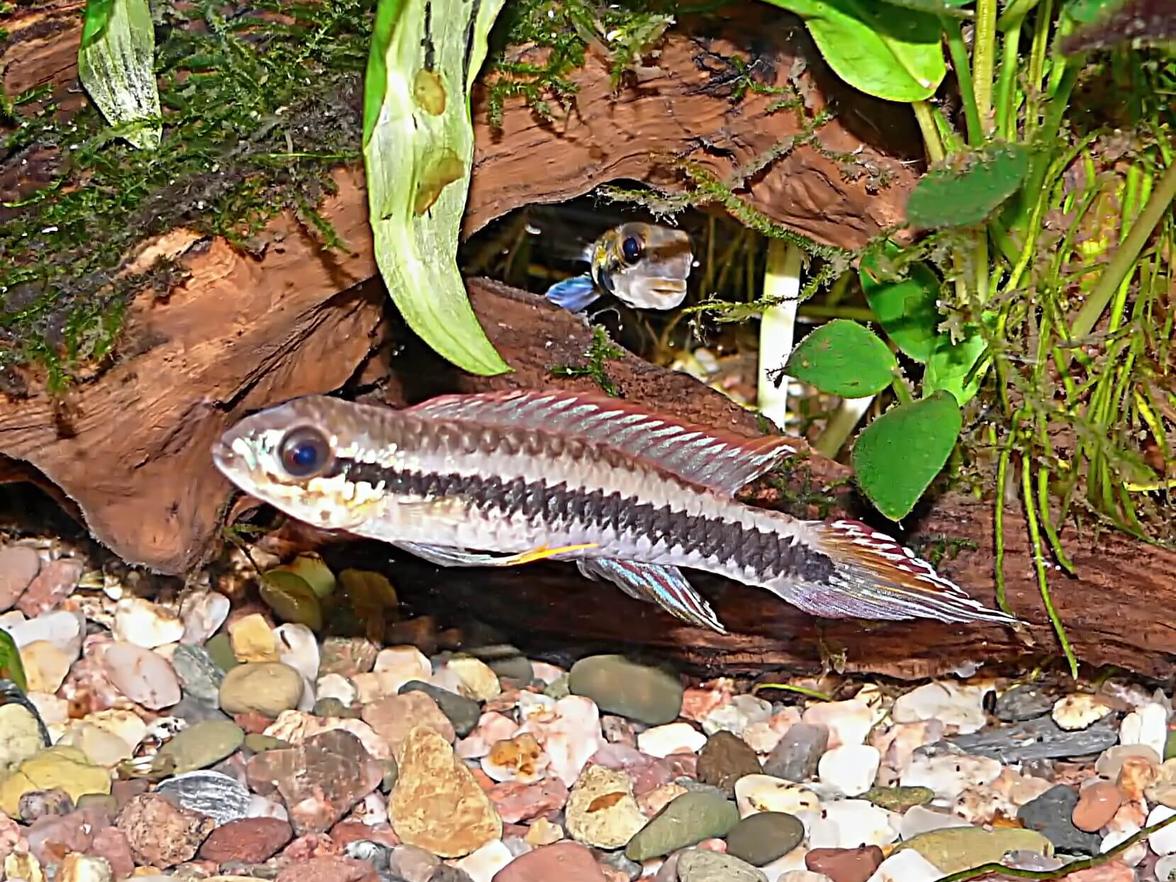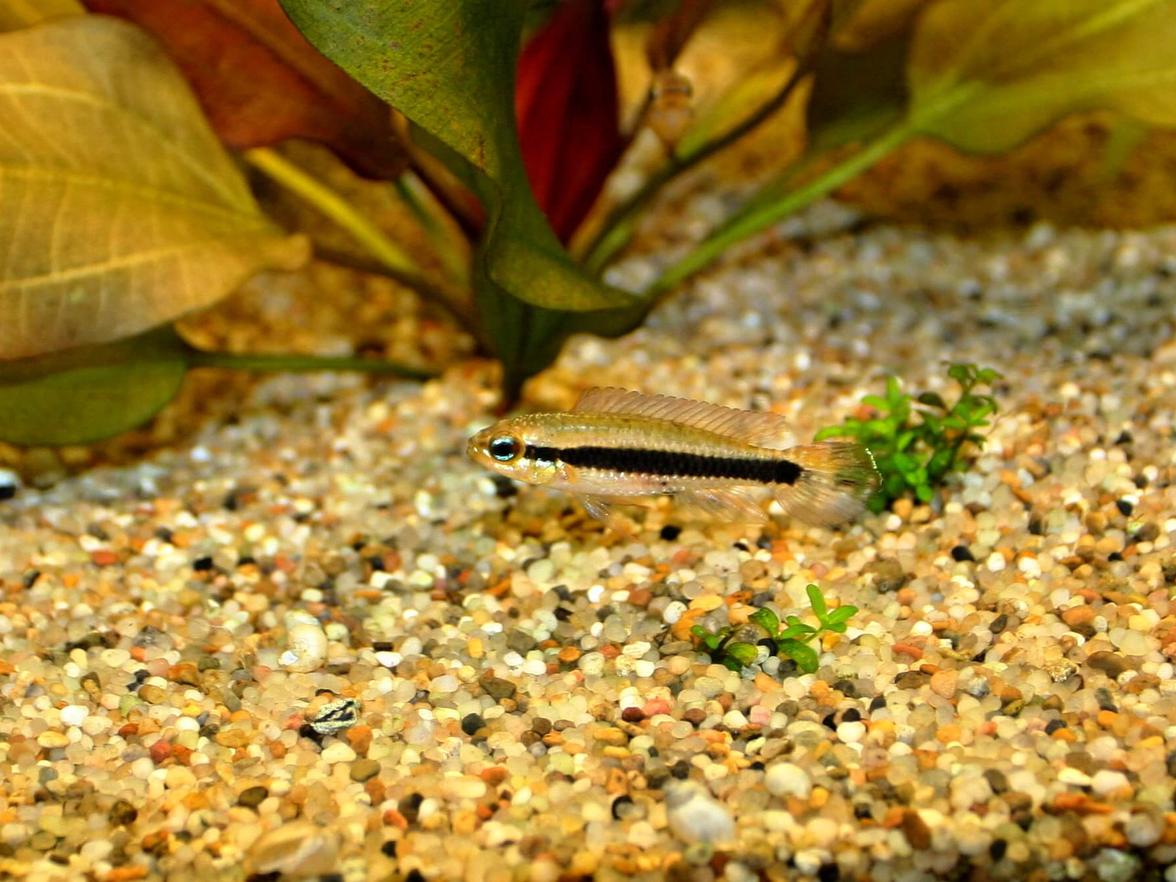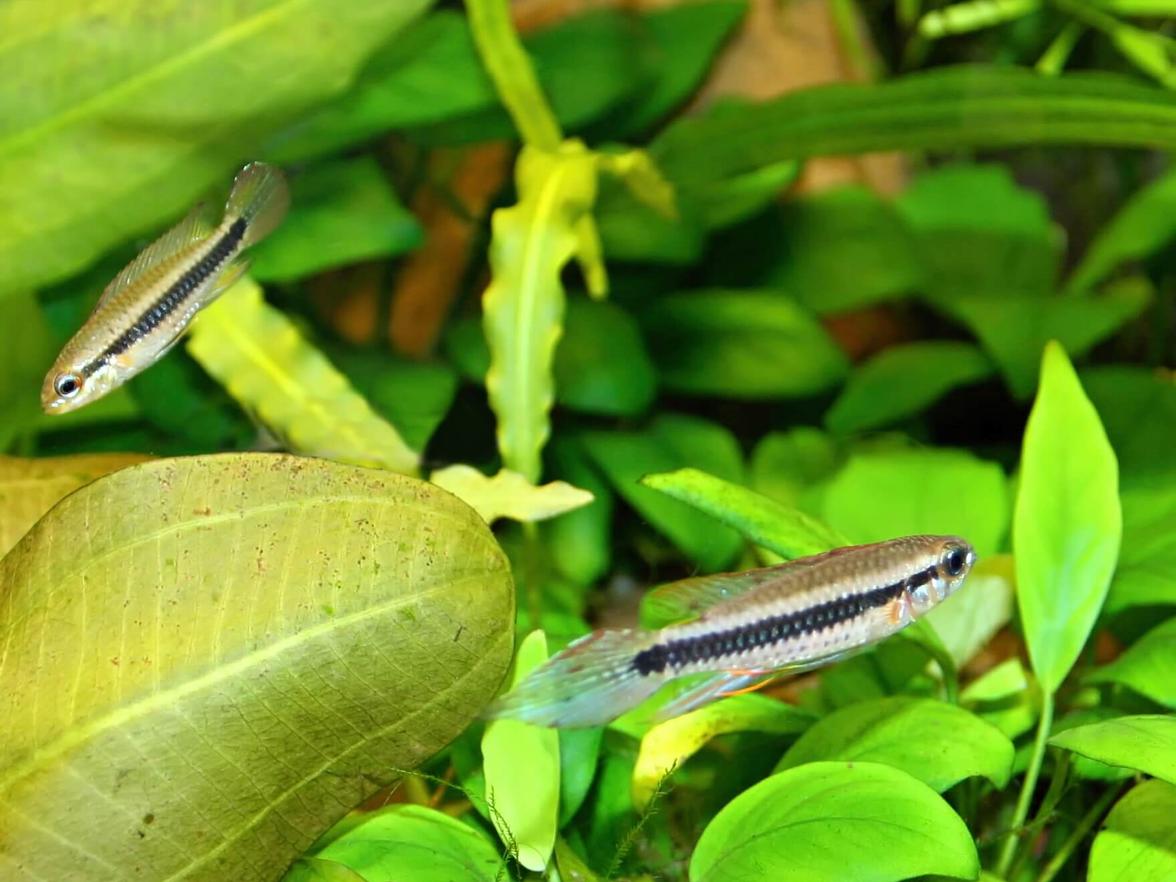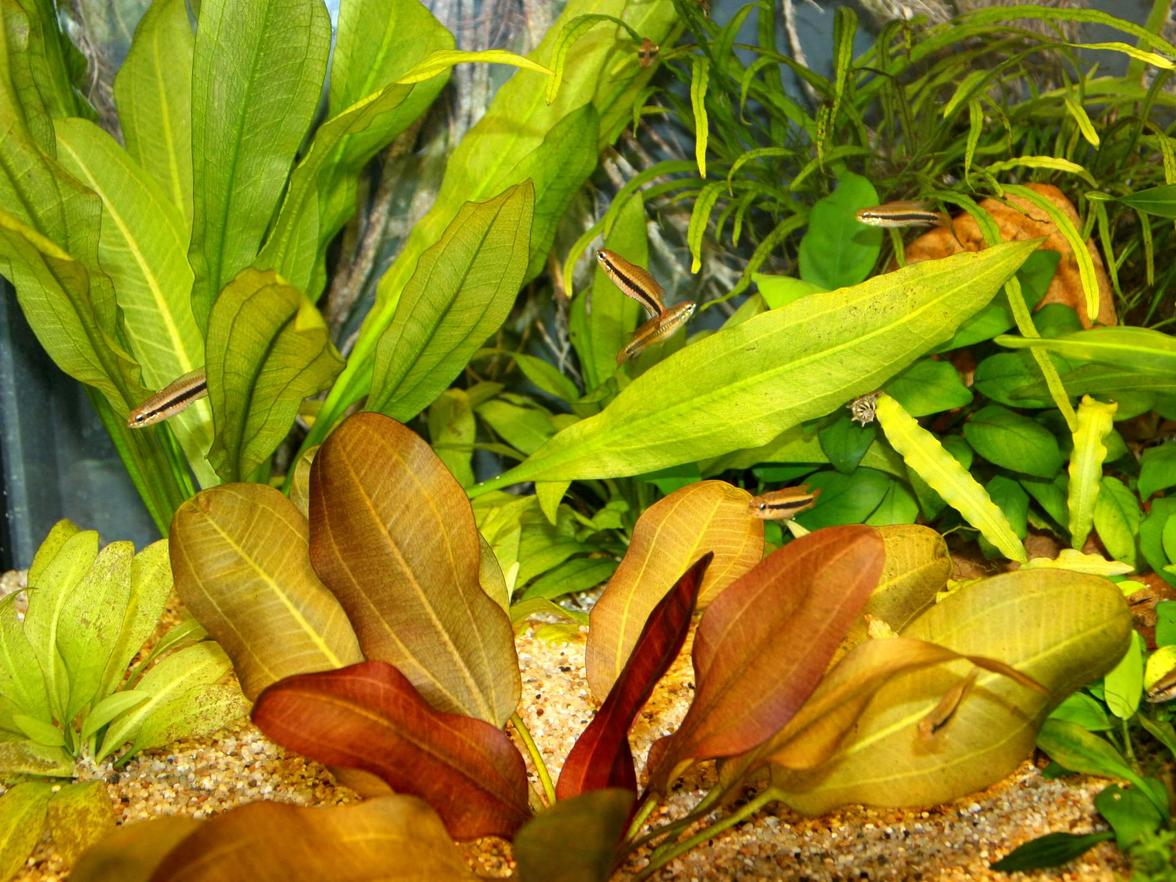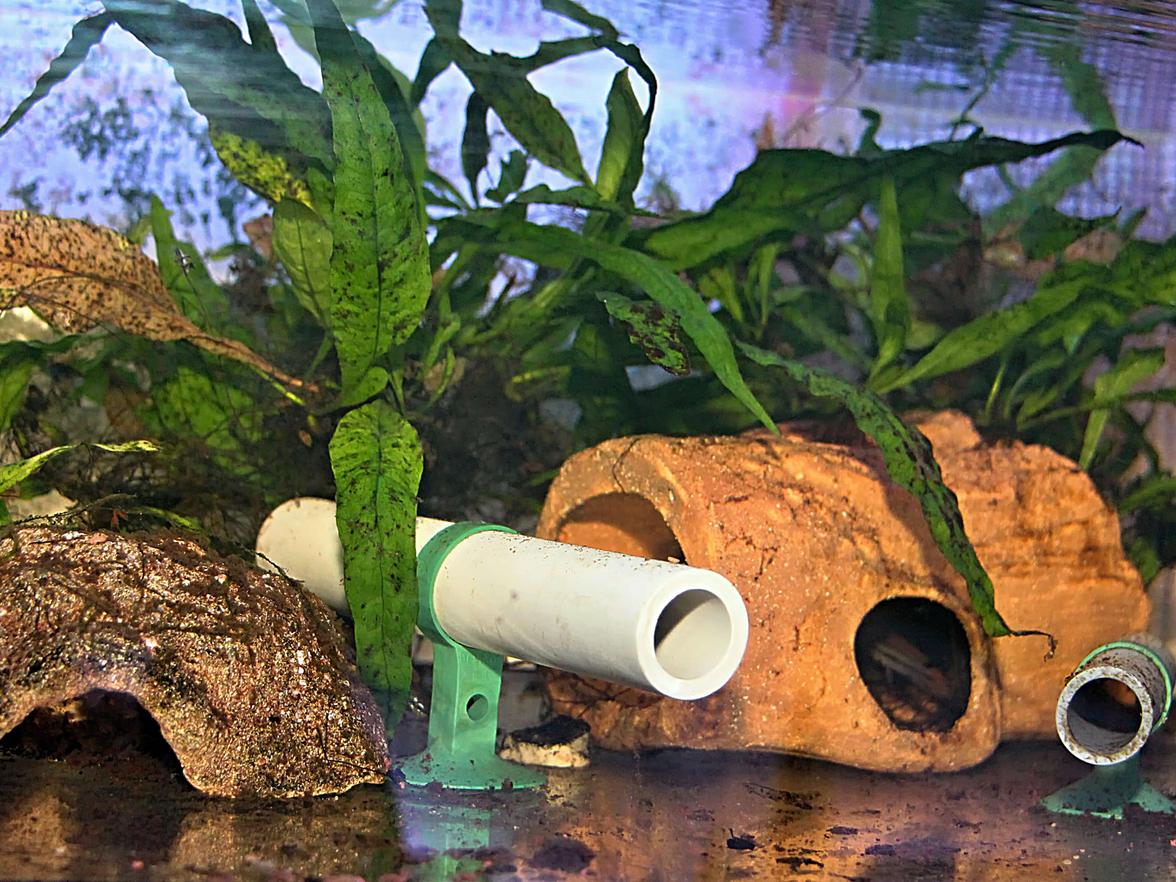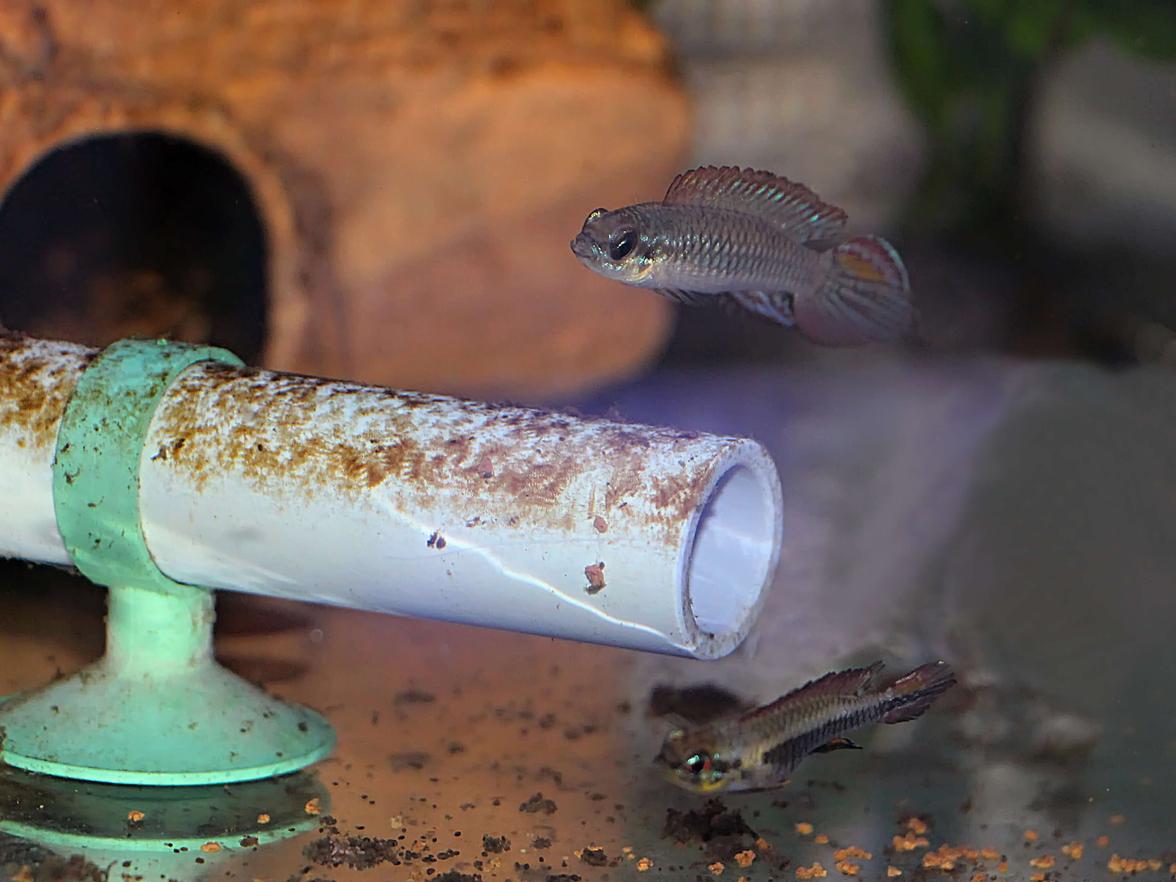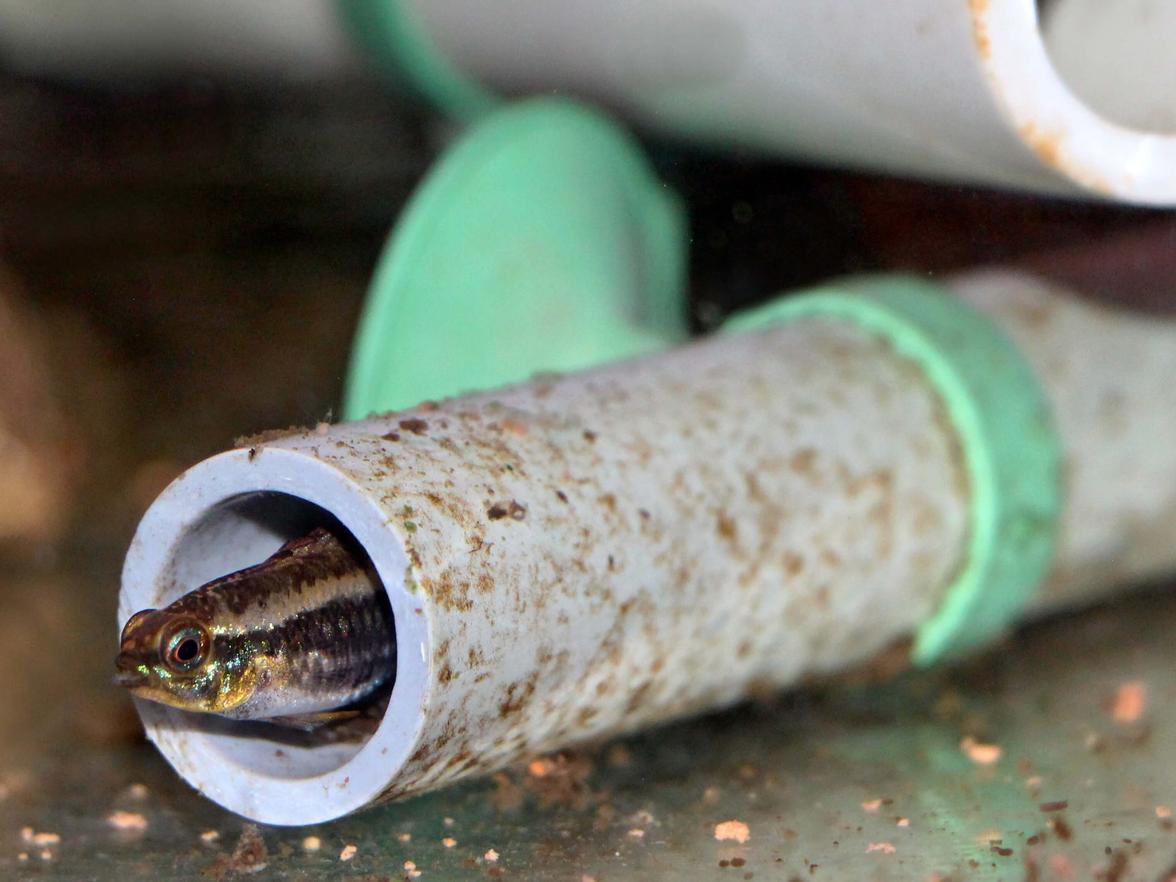Along with tetras, Corydoras catfish, and plecos, the so-called dwarf cichlids (Cichlidae) are among the most popular South American fish. These fish inhabit white, black, clear, and mixed waters. A representative of the fish living in blackwater and one of my favorite cichlids is the torpedo dwarf cichlid (Taeniacara candidi). Breeders say that the art of regularly breeding it is already the "high school of aquaristics". They are ideal inhabitants of aquariums where we want to keep smaller and peaceful aquarium fish. They captivate every observer with their body shape, coloration, and interesting lifestyle.
A Jewel at First Sight
Experts will confirm that this species is in many ways similar to another dwarf cichlid of blackwater, the two-striped dwarf cichlid (Apistogramma diplotaenia). Both fish have a torpedo-like shape, and the arrangement of aquariums for them, feeding, and water parameters for keeping and breeding are quite similar.
Although the fish was described in 1987, it was not until 1991 that it came to Europe in larger numbers. At that time, Axel SCHNEIDER, Wolfgang WINDISCH, and Dr. Uwe RÖMER visited the area of the middle and lower Rio Negro, where they could not only observe these fish in the wild. However, they also brought a larger number of specimens to Europe and reproduced them in the following months.
In nature, it lives in shallow waters. As mentioned above, these are black waters, very soft and acidic. In these waters, we do not find plants, the bottom is usually sandy with a lot of fallen leaves and old branches. Here the fish find convenient hiding places from enemies. Predators are mainly predatory tetras, e.g., Hoplias malabaricus, but also larger cichlids - often representatives of the genus Crenicichla, but also many others.
At the confluence of the Rio Preto with the Rio Padauari, WINDISCH measured a conductivity of less than 10 µS/cm, a pH of 4.2, the water was 1.6 m deep. Males grow up to 7-8 cm, females up to 5 cm maximum.
Keeping
An ideal aquarium has a capacity of 60-100 liters, it can also be larger. To make the dwarf cichlids feel good in it, we should not skimp on hiding places. The more plants, pots, roots, stones, or various tubes there are, the better. Of course, when arranging the aquarium, we also keep aesthetics in mind. Solid filtration, not too strong water current in the aquarium, and not too intense lighting. In ordinary tap water with a pH of around 6.8 and a temperature of around 25-26 °C, the fish feel quite good. It depends on whether we are aquarists who want to have only an interesting fish in terms of shape and color at home, or aquarists who want to try to breed the fish from time to time, or aquarists who want to breed the fish regularly and in larger numbers.
In the first case, we can manage keeping them in a usual community tank, in which peaceful and smaller fish swim, preferably South American tetras. This is how I started with T. candidi. Together we can keep cardinal tetras (Paracheirodon axelrodi), neon tetras (Paracheirodon innesi), smaller representatives of the genera Hyphessobrycon, Hemigrammus, pencilfish of the genera Nannostomus, Copella and Pyrrhulina, and others. However, in a community tank, these cichlids are susceptible to diseases, especially bacteriosis. As a rule, they do not reach an older age in such conditions. In addition, if spawning and hatching of young happen to occur, it is precisely these "peaceful small tetras" that are the most predatory predators that quickly devour the young. It is a paradox, but the parents chase larger neighbors away from the spawn or fry. Tiny tetras, due to their small size, do not pose a threat to adult fish, and it probably does not occur to the parents that these little ones could easily devour their young.
However, it is ideal to keep torpedo dwarf cichlids alone in a "species" aquarium. If we want to keep several females together, we place the tubes or parts of the pots at least 30 cm apart so that the females do not attack each other too much. If we have several males in the aquarium, it is always a problem. They fight with each other until the weaker ones gradually die and in the end, the strongest one remains anyway. Only in a larger aquarium, abundantly overgrown with plants and with a lot of various hiding places, do we have a chance that more males will survive in this aquarium. The total bottom area of the aquarium is always more important than its height, a water column of 15-20 cm is sufficient. Each female has its own mini-territory, which it also defends. It is good to cover the bottom of the tank with river sand with a grain size of 3-5 mm, which provides good protection for young cichlids. In such a harmoniously functioning tank, we can then, when using water with the right parameters, also observe the breeding of fish.
Usually, professional breeders, who are primarily interested in the number of reared fish, use the third option for breeding. To achieve productive breeding, they keep the fish separately in pairs, or one male with 3-4 females. Then 10-40 liter tanks are usually sufficient, again with many hiding places, and above all narrow tubes that do not have to be too long. 4-5 cm is enough. Their diameter is decisive, about 1 cm. I use a similar type of tube, but longer, e.g., for breeding Poecilocharax weitzmani or some smaller plecos.
Feeding
One of the basic conditions for trouble-free keeping and successful breeding is a varied and high-quality diet that is not too rich in fats, but also contains a sufficient amount of so-called ballast substances. Live food best suits this. We prefer plankton (daphnia, occasionally we add water fleas), in case of need, artemia nauplii will help. We give live or frozen mosquito larvae or bloodworms in small quantities and 1-2 times a week is completely sufficient. With more frequent use, the fish become oversaturated with this food and do not take it in sufficient quantities. Flake food or granules are rarely accepted by these fish, rather in situations where they are starving. I do not recommend tubifex too much, because on the one hand, they increase the risk of bacteriosis, and on the other hand, the fish are then too robust and very reluctant to spawn.
Water
In nature, torpedo dwarf cichlids live in black water, which is both very soft and acidic. For years, I have been of the opinion that it is not very advisable to experiment with fish and try to accustom them to conditions that the keeper likes. It is always wiser to give preference to fish in the selection. And as experience shows, soft water is ideal for them, usually up to 5, maximum 10°dGH. For breeding, I use "neon tetra" water, i.e., a maximum of 20-30 µS/cm, when it comes to artificial water (ion exchangers). Natural water can be a little "worse", around 40-50 µS/cm. For both types of water, the rule is that they must be acidic, with a pH of around 5.0-5.7.
Breeding Dwarf Cichlids
The ideal preparation for keeping and breeding these small fish is experience with keeping and breeding tetras, both in terms of feeding, water preparation, and the cleanliness of the tank. The actual rearing of the already hatched fry is much easier with cichlids. The most difficult thing is to get the fish to spawn at all, so that they first reach this age and secondly force themselves to spawn. Here again, it mainly depends on whether we create ideal conditions in every respect.
The fish spawn in caves, in my case in the tubes described above, less often also in other hiding places. The female chooses the hiding place, the male only fertilizes the spawn. The rest of the work is left to the female. Only sometimes, when the fish are kept in pairs, does the male help the female. However, usually after spawning, the male takes care of the other females and the protection of a larger territory.
There are not many eggs, usually only a few dozen fish are reared. Hatching at a temperature of 27-28 °C occurs after about 3 days, after another 4 days the fry begin to swim freely. The alpha and omega of successful rearing are suitable conditions for keeping the parents (high-quality water and food above all) and high-quality water for development. I prefer to use natural water (from a spring 20 km from České Budějovice, 45 µS/cm, pH 5.6), or I prepare similar water for myself.
This is not a problem for tetra breeders because they must be able to prepare water that is quite similar to "neon tetra" water. It is better to use ion exchangers than reverse osmosis. In my case, this works better for both tetras and torpedo dwarf cichlids. The lower the dKH, the better. For the actual rearing of the hatched fry, we will use fine artemia nauplii, daphnia as starting food, but meticulous cleanliness in the rearing tank is required! We feed several times a day, always in smaller quantities. Every day I suck up food residues from the bottom with a fine hose and replace the sucked water with fresh water. This can already be a little harder than the development water used, I usually use stale tap water. The grown fish will swim in it later and will gradually get used to it in this way. We do not exceed more than half a liter per day. Not only adult fish, but especially young fish do not like major changes in water chemistry (it is similar to Dicrossus filamentosus).
Photo:
- Adult male Taeniacara candidi
- Young female T. candidi
- Female on the left courting the male
- It is ideal that the dwarf cichlids do not damage the plants
- 40-liter spawning tank
- Taeniacara candidi SANTAREM at the beginning of spawning
- The female guards the spawn very carefully
Text and photo Dr. Vladko Bydžovský
